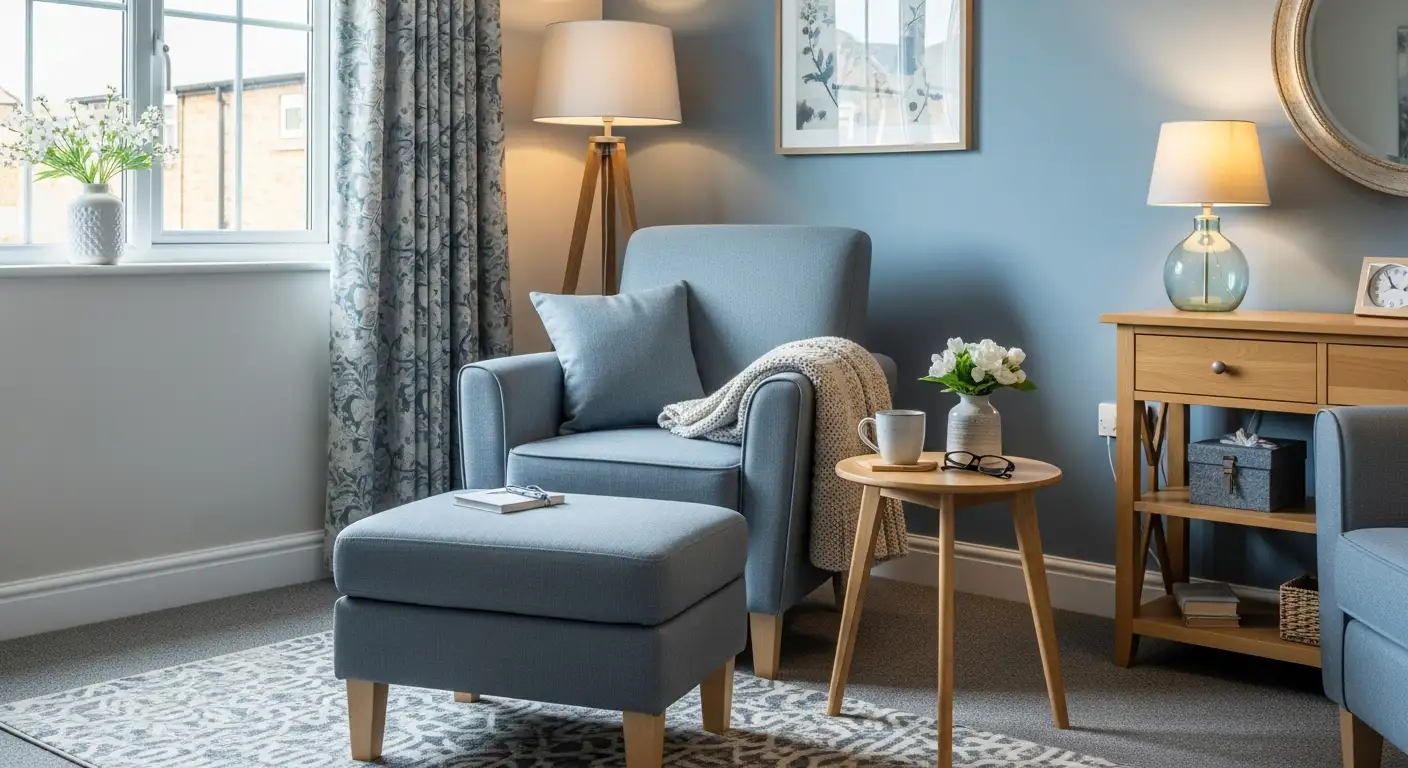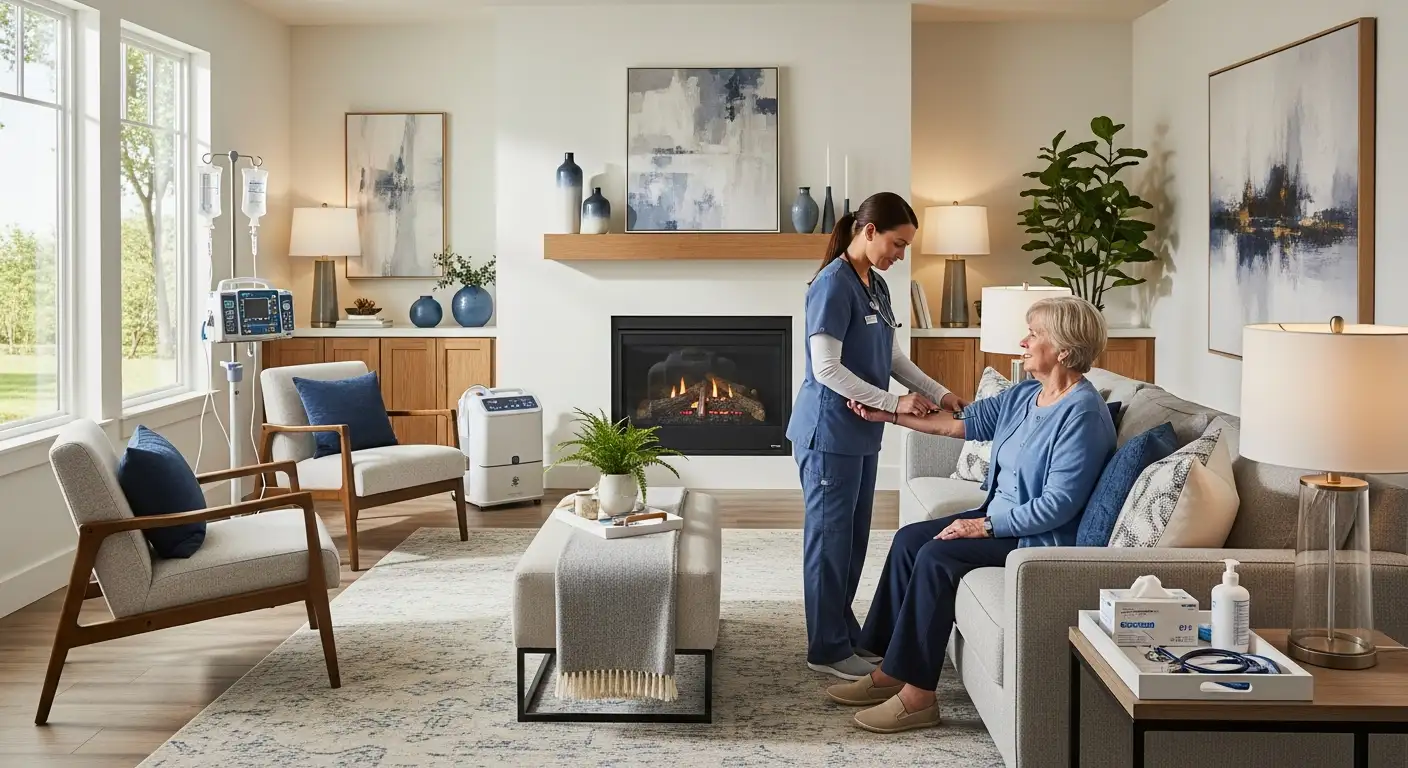Understanding Adaptive Clothing
Adaptive clothing has been designed with the unique needs of seniors in mind, addressing the difficulties they encounter in dressing and undressing due to physical limitations. This type of apparel offers significant comfort, convenience, and promotes independence in daily routines.
Purpose of Adaptive Apparel
The primary purpose of adaptive apparel is to provide practical clothing solutions that help seniors maintain their dignity and self-esteem while promoting independence in personal care. Adaptive clothing options prioritize ease of dressing, with features that allow individuals with various physical disabilities, diminished motor skills, or cognitive impairments, like dementia, to dress themselves with greater ease [1].
Key BenefitsDescriptionComfortDesigned to be soft and non-restrictive.ConvenienceFeatures such as easy closures for hassle-free dressing.IndependenceEnables seniors to dress themselves, fostering self-esteem.DignityAllows individuals to maintain their personal style and dignity.
Features of Adaptive Clothing
Adaptive clothing incorporates several specialized features aimed at making the dressing process smoother. Common characteristics include:
By understanding the purpose and features of adaptive clothing, caregivers can better assist seniors in selecting suitable clothing options that maximize both comfort and independence. For additional resources on senior care, consider exploring elderly incontinence care products and elderly bathing and grooming aids.
Types of Adaptive Clothing
Adaptive clothing plays a critical role in enhancing the comfort and independence of seniors. It is designed to address specific challenges faced by the elderly, including mobility and dressing difficulties. Here are some types of senior adaptive clothing options.
Wheelchair-Friendly Options
Adaptive clothing options for wheelchair users ensure practicality and accessibility without compromising dignity and personal style [1]. These garments are designed to fit well while seated, offering ease of movement and comfort. Key features often include:
FeatureDescriptionLonger Back LengthPrevents clothes from riding up, ensuring coverage and comfort.Open-Back DesignsAllows for easy dressing while seated.Stretchable FabricsProvides comfort and accommodates different body shapes and sizes.
Adaptive Footwear
Adaptive footwear for seniors is specifically designed to accommodate various foot conditions and mobility challenges. These shoes feature wider openings, adjustable closures, and supportive soles to ensure comfort, stability, and reduce the risk of falls [1].
Key features of adaptive footwear include:
FeatureDescriptionAdjustable ClosuresProvides a customized fit for different foot conditions.Non-Slip SolesEnhances grip and stability, reducing fall risk.Extra CushioningIncreases comfort during prolonged wear.
Innovative Closures
Adaptive clothing incorporates a variety of innovative closures that facilitate easy dressing and undressing. This is particularly important for seniors with limited mobility or dexterity [1]. The use of alternative closures helps reduce frustration and save time during the dressing process. Common options include:
Closure TypeBenefitsVelcroEasy to adjust and secure without needing fine motor skills.SnapsSimple to use for quick fastening and unfastening.MagnetsAllows for effortless closures that do not require precise hand movements.Elastic BandsProvides flexibility and comfort while being easy to pull on or off.
By understanding the various senior adaptive clothing options available—from wheelchair-friendly garments and adaptive footwear to innovative closures—families and caregivers can help enhance the independence and comfort of older adults. For additional resources on caregiving, check out our articles on elderly nutrition counseling and elderly incontinence care products.
Benefits of Adaptive Clothing
Adaptive clothing offers various advantages that cater to the unique needs of elderly individuals and their caregivers. These benefits not only enhance daily routines but also foster independence and safety.
Comfort and Convenience
Adaptive clothing is specifically designed to address the challenges seniors face when dressing and undressing due to physical limitations. Garments are crafted with comfort in mind, often using soft fabrics and easy-to-manage closures. This design approach enhances convenience in daily living by simplifying the dressing process. Features such as open or snap-back tops, long side zippers in pants, and Velcro closures are tailored for those with diminished motor skills or arthritis, making it easier to wear and remove clothing without assistance [2].
Adaptive Clothing FeaturesBenefitsOpen or snap-back topsEasy access for dressing/undressingLong side zippersConvenient for bathroom useVelcro closuresSimplifies fastening for limited dexterity
Independence in Dressing
One of the primary benefits of senior adaptive clothing options is the promotion of independence in dressing. With specially designed features, individuals are empowered to dress and undress without needing assistance from caregivers. This is vital for fostering a sense of self-reliance and dignity. Brands like Joe & Bella offer easy-to-close fasteners and magnetic buttons that allow individuals with limited mobility to manage their own clothing [4]. The ability to choose from various styles, colors, and patterns also allows seniors to express their personal style, promoting self-esteem and individuality [5].
Safety Measures
Safety is another crucial aspect of adaptive clothing. The right apparel can help prevent accidents during dressing and minimize the risk of falls. Many designs incorporate features like non-slip fabrics, which provide better grip and stability. Additionally, garments with longer lengths can help protect sensitive skin, while those with easy-to-use closures reduce the struggle associated with dressing, which can lead to fatigue and frustration. By selecting adaptive clothing, caregivers can facilitate a safer dressing experience, ultimately contributing to the overall well-being of the elderly individuals they support.
For further information on caregiving, including tips for managing daily activities, explore resources like elderly incontinence care products and elderly bathing and grooming aids.
Popular Adaptive Clothing Brands
As the demand for senior adaptive clothing options increases, several brands are leading the way in creating stylish and functional apparel that meets the needs of elderly individuals. Below are some noteworthy brands that specialize in adaptive clothing.
Tommy Hilfiger Collection
Tommy Hilfiger has developed a dedicated adaptive clothing line that focuses on combining fashion with functionality. This collection offers a variety of garments featuring innovative designs such as magnetic closures, which make dressing easier for seniors. These thoughtfully designed pieces cater to those who may have difficulty with traditional buttons and zippers. The Tommy Hilfiger Adaptive Collection not only prioritizes ease of wear, but also maintains the brand's signature style, enabling seniors to express their individuality while enjoying enhanced comfort.
Item TypeFeaturesShirtsMagnetic buttons, breathable fabricsPantsAdjustable waistbands, hidden closuresOuterwearEasy-access zippers, stylish designs
Target's Adaptive Line
Target has also entered the adaptive clothing market, offering a wide range of options for seniors. Their adaptive line includes clothing designed specifically for easy dressing and comfort. Key features in their garments include side zippers, which allow for simpler dressing, and fabrics that are both durable and breathable. This line not only meets practical needs but also ensures that seniors can find clothing that fits their style preferences.
Item TypeFeaturesTopsSide closures, varied sizesBottomsAdjustable waistbands, easy accessAccessoriesAnti-slip socks, supportive footwear
Nike's Adaptive Offerings
Nike's adaptive clothing line takes a unique approach by incorporating sportswear elements into their designs. These products are created to provide mobility and ease of wear, catering to seniors who still wish to maintain an active lifestyle. Nike’s adaptive line includes clothing that features adjustable closures and breathable materials, making it easier for seniors to engage in physical activities.
Item TypeFeaturesActivewearFlexible materials, adjustable elementsFootwearEnhanced support, easy accessibilityAccessoriesFunctional designs for comfort
Brands like Tommy Hilfiger, Target, and Nike are at the forefront of making adaptive apparel that combines style and practicality. It's essential for seniors and caregivers to consider such options when selecting clothing tailored to their unique needs. The incorporation of features like adjustable closures and breathable fabrics not only enhances comfort but also allows individuals to maintain their sense of style and independence. For more resources on clothing and products tailored for elderly individuals, explore our links on elderly incontinence care products and elderly bathing and grooming aids.
Importance of Adaptive Clothing
Market Growth and Trends
The importance of adaptive clothing is underscored by its growing market, which is projected to reach $278.8 million by 2027, with a compound annual growth rate (CAGR) of 6.6% from 2020 to 2027. This growth is driven by several factors, including the increasing elderly population, higher disposable income among seniors, and rising awareness of the significance of adaptive apparel [6].
YearProjected Market Value (in millions)Growth Rate (%)2020200-2027278.86.6
Such trends indicate a strong demand for innovative and supportive clothing options designed for seniors, enhancing their daily living experiences.
Stylish and Functional Designs
Adaptive clothing is not only designed with utility in mind but also emphasizes aesthetics and fashion. Modern adaptive apparel incorporates stylish features that cater to the needs of elderly individuals. Brands like Tommy Hilfiger, Target, and Nike have developed lines that feature magnetic closures, adjustable elements, and modified seams to enhance accessibility while maintaining an appealing look [6].
Those interested in specific features should also explore options provided by Joe & Bella, which includes tops with easy-to-close fasteners and soft fabrics tailored for individuals with limited mobility. This merging of fashion and functionality not only assists in the dressing process but also helps to boost self-esteem and confidence among seniors.
Caregiver Support and Respite Care
Supporting elderly individuals often requires immense dedication and time from family caregivers. Understanding the challenges caregivers face and the importance of respite care services can provide valuable insight into the caregiving landscape.
Challenges Faced by Family Caregivers
The responsibility of caregiving can take a considerable toll on family members. According to a study from the AARP and the National Alliance for Caregiving (NAC), 34.2 million Americans provide care to an adult age 50 or older in the United States. Family caregivers spend, on average, over 24 hours per week providing care, with many dedicating more than 40 hours per week to these responsibilities [7].
Some challenges faced by family caregivers include:
| Challenge | Description |
|-----------------------------|-----------------------------------------------------------|
| Emotional Stress | Feelings of anxiety, depression, and isolation |
| Physical Demands | Fatigue and health problems due to caregiving duties |
| Financial Strain | Impact on income and financial stability |
| Limited Support | Lack of adequate resources or support |
Importance of Respite Care Services
Respite care services play a crucial role in the well-being of caregivers. These services provide temporary relief, allowing family caregivers to take breaks from their responsibilities. Respite care can include in-home assistance, adult day care programs, or short-term stays in care facilities.
The benefits of respite care services include:
Using services like these can also help caregivers manage their own health and well-being, enabling them to continue providing the necessary support for their loved ones.
For additional resources on caregiver support, consider exploring topics such as elderly nutrition counseling, senior support hotlines, and geriatric pain management services.



